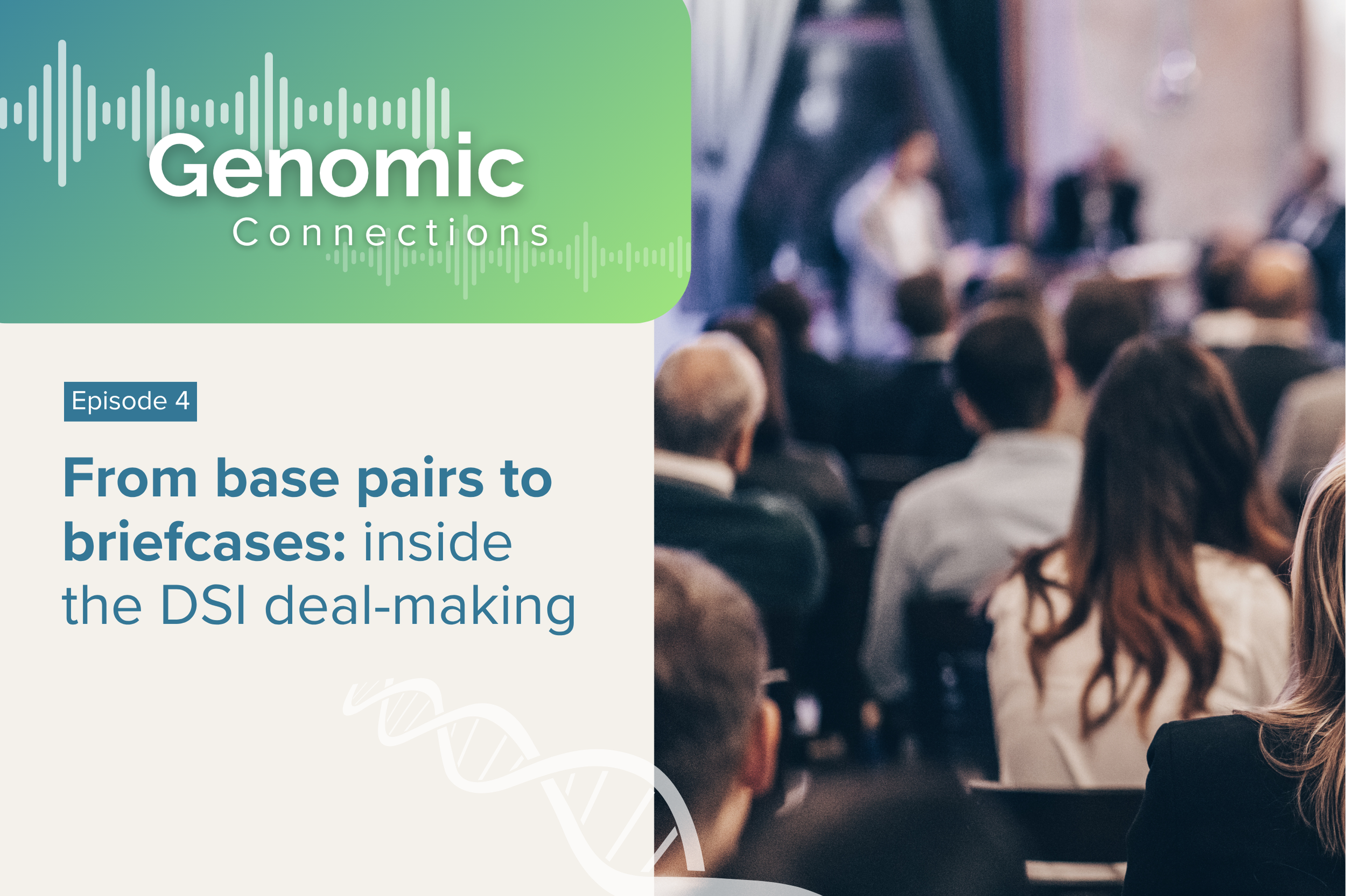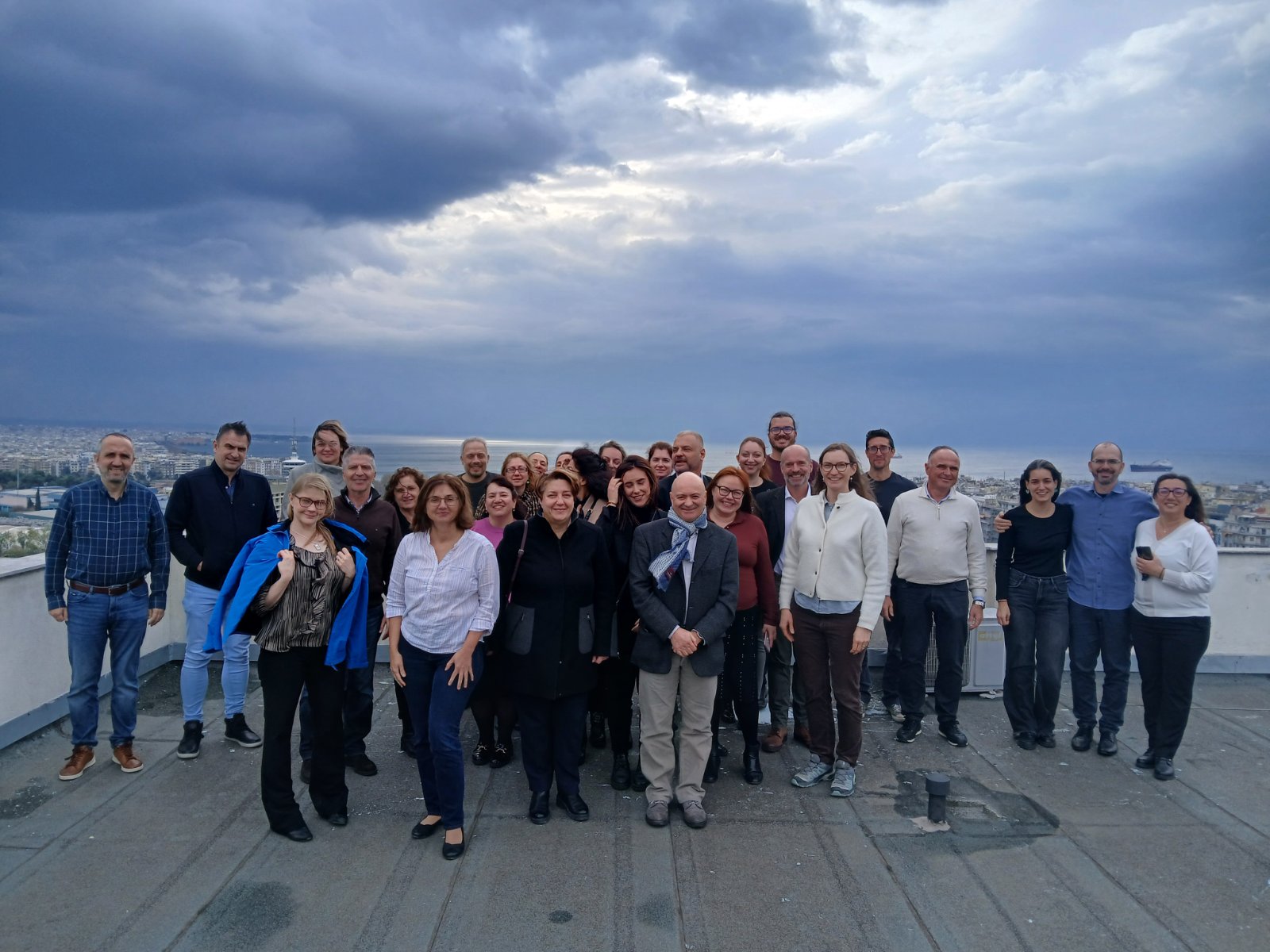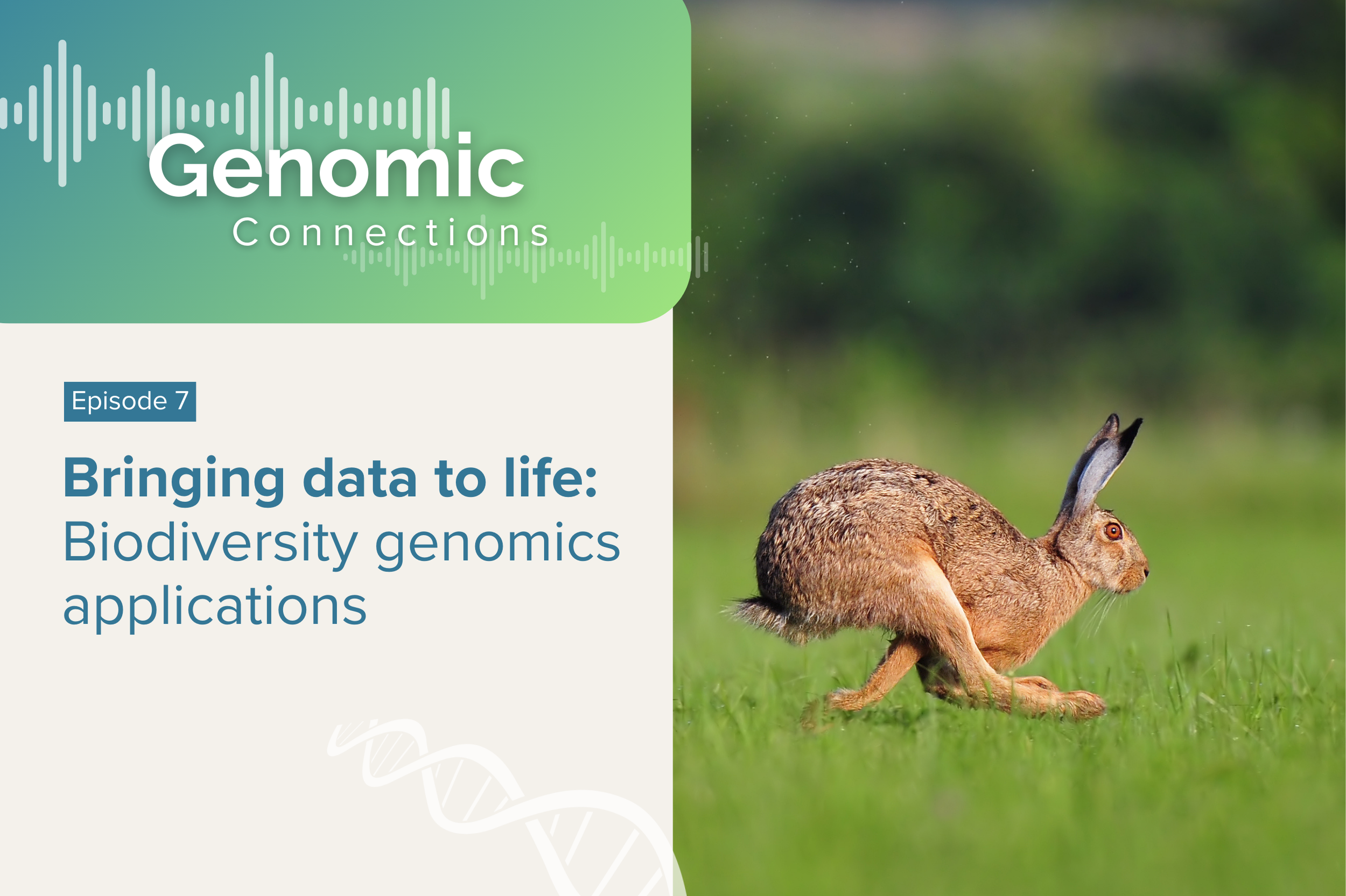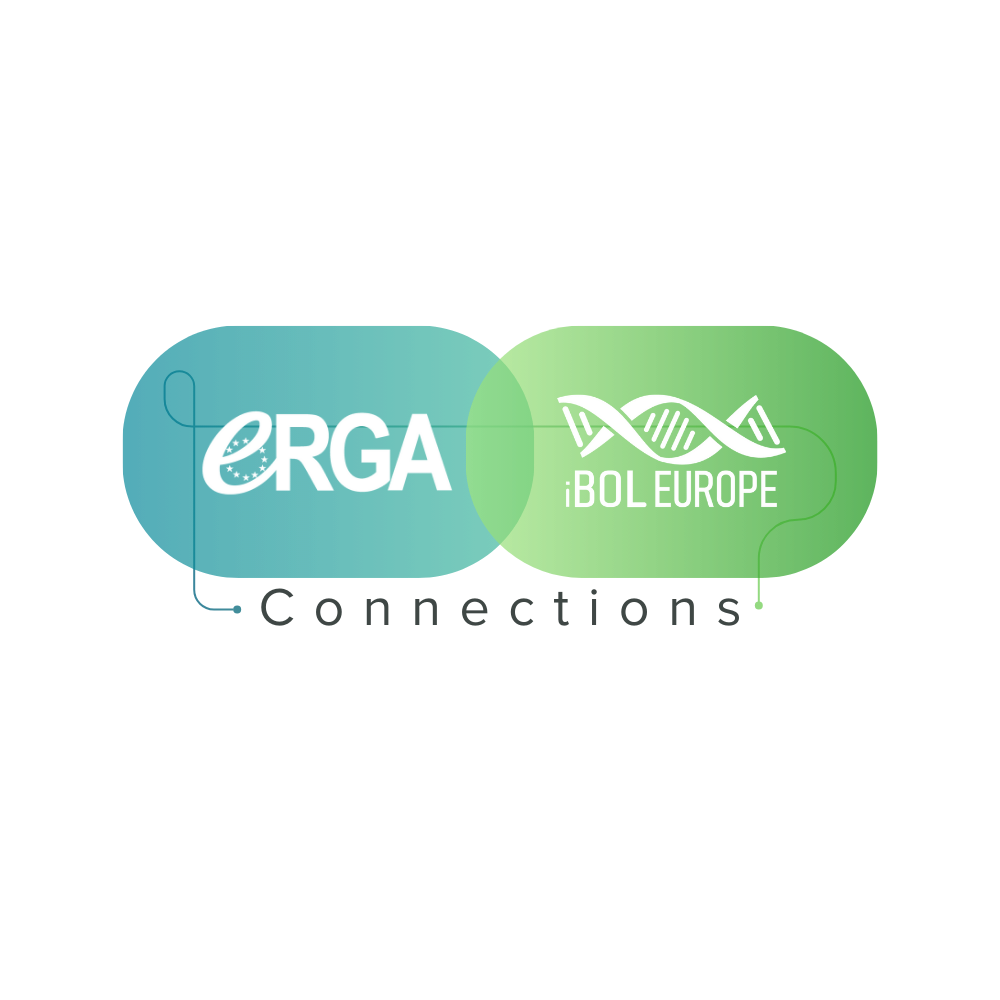In the fourth episode of Genomic Connections, Kasia Fantoni and Christian De Guttry are joined by Amber Hartman Scholz, microbiologist and Head of the Science Policy & Internationalisation Department at the Leibniz Institute DSMZ in Braunschweig, Germany. They dive into the topic of Digital Sequence Information, or DSI, and the ongoing global discussions on how to ensure equitable access to and fair sharing of benefits arising from the use of genetic information from biodiversity.
You can listen to Genomic Connections on Spotify and PocketCast. The RSS Feed is available here.
The episode’s full Transcript (AI-generated) is available below the credits.
If you want to learn more about the CBD – United Nations Convention on Biological Diversity, we wrote about it in this blog post.
Credits
“Genomic Connections” is a podcast about the science, stories, and people behind biodiversity genomics produced by ERGA and iBOL Europe within the Biodiversity Genomics Europe (BGE) project.
“Genomic Connections” is written and produced by Christian de Guttry, Kasia Fantoni, Luisa Marins and Chiara Bortoluzzi.
Graphic design by Luisa Marins.
Music (intro and outro): “Nostalgic Reflections” by Ant.Survila (c) copyright 2025 Licensed under a CC-BY-NC 4.0 license. Ft: airtone.
BGE is a Horizon Europe project funded by the European Commission, the Swiss Confederation and the United Kingdom.
The episode is licensed under a CC-BY 4.0 license.
You can listen to Genomic Connections on Spotify and PocketCast.
Episode #4 Transcript
(0:05) My phone made a great playlist last night. (0:08) Every song was called Track 01 by unknown artists. Can you imagine? (0:12) I love the music, but I could not like the band.
(0:15) Yeah, that is digital sequence information in a nutshell. (0:19) Great DNA data, yet no credit or benefit for the country that provided it. (0:25) It’s a bit like dancing at a concert where the musicians are hiding.
(0:29) Yeah, exactly. (0:31) So the current DSI talks are like the manager saying enjoy the music,(0:36) but buy a t-shirt so the artist gets something back. (0:40) Today we will ask how can science keep the playlist open (0:44) while making sure that the right people share the rewards.
(0:49) So grab your headphones because this episode is about keeping the music playing (0:54) while giving proper credit to the people behind every note. (0:58) I am Kasia Fantoni, iBOL Europe Community Manager. (1:02) And I am Christian Beguttri, ERGA Project Manager.
(1:05) And you are listening to Genomic Connections, podcast about biodiversity genomics. (1:11) So today we are joined by Dr. Amber Hartmann-Scholz, (1:17) a macrobiologist and head of the Science and Policy and Internalization Department (1:22) at the Leibniz Institute DSMZ in Braunschweig, Germany. (1:28) She leads projects on international science policy (1:31) and especially on access and benefits sharing and digital sequence information.
(1:36) She led the DSMZ implementation to become a registered collection (1:40) under the EU Nagoya Protocol regulation (1:43) and co-founded both the DSI Scientific Network and German Nagoya Protocol Hub. (1:48) The Science, Policy and Internationalization Department (1:52) at the Leibniz Institute DSMZ in Braunschweig, Germany, (1:56) coordinates the Institute’s strategic engagement (1:58) in science policy and international collaborations. (2:02) It supports global biodiversity initiatives (2:05) and represents DSMZ in international frameworks, (2:08) including those related to access and benefits sharing under the Nagoya Protocol.
(2:14) To set the scene, how does someone move from pipettes and lab coats (2:20) into the high stakes world of international treaty talks? (2:23) And what drew you personally to the ethical and legal side of genomics? (2:28) It’s a great question. (2:29) I think the best place to start is the words that my undergraduate advisor gave me, (2:36) which is that opportunity favors the prepared mind. (2:39) And so in some ways, the transition from the bench to policy is a coincidence.
(2:45) But in some ways I was prepared and I knew that I wanted to go there. (2:49) And so I really went into graduate school and did my PhD (2:54) because I wanted to ask questions. (2:58) I wanted to understand the life sciences at a deeper level.
(3:04) But at the same time, I knew that I didn’t want to stay in laboratory based sciences. (3:11) And I had heard in my undergraduate about this field called science policy. (3:17) And so the entire time that I’m doing my PhD, (3:19) I know that I want to go into the field of science policy.
(3:22) And I’m kind of constantly looking around thinking, how am I going to get there? (3:27) And the coincidence is that funded by the Gordon and Betty Moore Foundation, (3:33) there was an inaugural program of the California Council on Science and Technologies (3:39) science policy fellowships that was advertised in the summer that I was writing my PhD thesis. (3:47) So this is the summer of 2009. (3:49) I mean, before then, there were other options.
(3:52) So most people would apply for, at least in the United States, where I was born and raised.(3:59) The American Association for the Advancement of Science at the national level (4:03) has also a number of science policy fellowships that are offered. (4:06) And so my backup plan had always been, OK, I’ll apply for a AAAS fellowship.
(4:11) But because that one happened. (4:12) And at the time, again, another coincidence is that I started my PhD at Johns Hopkins University, (4:17) which is in Baltimore. But my PhD advisor, Jonathan Eisen, (4:21) took a job at the University of California at Davis in my fourth year.
(4:25) So I was sort of a visiting student living in Northern California. (4:29) And then I had to go back and forth once a year to Baltimore. (4:33) And so I’m sitting there in my now husband’s apartment writing my thesis.
(4:39) And then I see this email pop through and I was like, oh, look, I don’t even have to like move.(4:43) I can just stay here in Davis and drive to Sacramento, which is a 20 minute commute. (4:47) And I have to get this fellowship.
And I did get it. (4:51) I mean, it was quite competitive. But then once you kind of get your foot in the door, (4:54) then you have your first policy experience.
(4:56) And then I was looking for a job actually in D.C. at that at that point. (5:03) Indeed, to leave Northern California for family reasons. (5:08) And then my program officer that I had had during my PhD, a woman named Mary Maxson, (5:15) had a job in the Obama administration at the White House Office of Science and Technology Policy.
(5:19) And it turns out that she was being promoted to a different position in OSTP, which meant that her job was free. (5:25) So when I reached out to her for a networking conversation just to sort of hear, you know, the D.C. scene, (5:32) her job became open and she handed my resume over to the PCAST co-chairs, (5:38) which is the President’s Council of Advisors on Science and Technology. (5:41) And then.
To make a much longer story short, I ultimately landed there. (5:47) So it really much is like I was looking for it. (5:50) But also sometimes you kind of get lucky and, you know, you’re in the right place at the right time with the right set of skills.
(5:57) And and the same thing again here. At the DSMZ. (6:02) So, again, for family and for private reasons, we left D.C. (6:07) after we started a family and I landed in Braunschweig, Germany, which is my home, (6:12) my husband’s hometown, which is, you know, quite different than Northern California or Washington, D.C. (6:20) And I kind of looked around at different biology institutes and I’m trained as a microbiologist.
(6:25) And I was like, oh, yeah, the the DSMZ is here, the German Collection for Microorganisms and Cell Cultures. (6:31) Oh, look, they have a relatively new director, a guy named Jorg Overmann that I knew from my Ph.D. (6:35) because I had studied in Woods Hole, Massachusetts and taken a microbial diversity class there. (6:40) And I met and worked with him for several weeks during the summer.
(6:43) And I was thinking, oh, wow, huh, maybe he could help me find something in the region.(6:50) And so I came in to have coffee with him. (6:52) And then it turns out that he was looking for a deputy, for somebody to sort of help with with the broader strategic issues that the Institute was facing.
(7:01) And so he kind of created a job at that time point. (7:05) And then the Institute was also facing the challenges of implementation with the Nagoya Protocol, (7:11)because we receive microbial deposits from around 90 different countries around the world and send out 40,000 things a year around the world. (7:22) And so we really have to worry about the international regimes that govern biodiversity, even though our stuff is invisible, it’s still biodiversity.
(7:31) And so basically, I start my job in 2014. (7:34) And that’s when the Nagoya Protocol, which is the foremost sort of instrument that regulates access to biodiversity and the requirements to share benefits. (7:44) And he just sort of says, like, Amber, there’s this new Nagoya Protocol.
(7:47) It’s going to create a lot of problems for the collection, for our research. (7:51) Could you like work on that? (7:53) And at the time, it was I had no idea that it would turn into, you know, what’s now become a 12 person department focused on many different aspects of this international policy complex. (8:07) In the broader sense, benefit sharing, but also the buzzwords, digital sequence information and indicators and the global biodiversity framework and a number of other topics that we can get into.
(8:17) So you can kind of see like there were a lot of coincidences where I never could have seen it coming. (8:23) And, you know, most people probably won’t have the luck to just have jobs created for them here or there. (8:27) And I definitely didn’t plan it that way, but it kind of just ended up that way a little bit.
(8:34) Well, that’s very much of an incredible sequence of coincidence. (8:39) Indeed, it’s really fascinating how you got where we are. (8:44) So with the next question, for anyone who keeps hearing DSI, what does it exactly mean? (8:52) What is digital sequence information and why it has become such a diplomatic hot potato? (8:59) Yeah, that’s a great question.
I think the funniest thing when talking to different scientific communities is that they hear the word digital sequence information. (9:07) And it kind of sounds like something that they sort of know or might have heard about, but it doesn’t actually ring a bell. (9:14) Right.
So if somebody says to you genetic data or nucleotide sequences or, you know, RNA, DNA, you’re like pretty sure that you know what they’re talking about. (9:23) Digital sequence information is like sounds like this funky like cousin of genetic data. (9:29) And I think that’s probably a fair characteristic.
The reason that it sounds like that is because it’s an invented policy term that was coined in 2016 at Cancun at COP 13. (9:42) So the basic way to understand this, and I’m going to kind of give you a little bit of a cartoon version of what happened. (9:50) Parties had agreed in 2010 to the Nagoya Protocol, as we just mentioned.
And in 2016, the Nagoya Protocol has now taken force. (10:01) But some of the underlying tensions or unresolved issues that didn’t get solved in the Nagoya Protocol kind of come bubbling up.(10:14) And one of those issues that had been discussed, but for which there was never enough political will, time or attention was the topic of, well, what about genetic data? (10:25) Is that in or not in the Nagoya Protocol? And it was always kind of this gray area where parties didn’t specifically say that it was or wasn’t in the Nagoya Protocol.
(10:33) And so COP 16, led by an African group, but then supported by BRULAC, which is the Latin American group. (10:42) This topic of digital sequence information, again, so the policymakers just kind of like create this word like on the spot there in Cancun and they say, this is what we’re going to call this. (10:52) And the basic policy rhetoric behind that is scientists have access to this huge genetic databases.
(11:05) They can use those databases that are open to the public and they can use the tools of synthetic biology, like CRISPR-Cas9 is kind of like just coming online. (11:16) But there’s definitely the topic of synthetic biology already at that. And negotiators know about that because that’s also another parallel negotiation track under the Convention on Biological Diversity.
It relates to the Cartagena Protocol. (11:28) So negotiators are kind of like piecing together, OK, well, we didn’t really resolve the issue about genetic data in the Nagoya Protocol. (11:33) And now they have these cool biotech tools in synthetic biology.
And so the rhetoric or the hypothesis, depending on your discipline, is made. (11:47) Those scientists can use those tools and that open data and they can have a loophole and not need to come back to collect physical samples from mega biodiverse countries and bypass the rules and regulations of the freshly negotiated Nagoya Protocol. (12:06) And so digital sequence information is kind of this term that refers to this intersection of science and policy in which we have policy observations being made about advancements in science and the international policy community needing to catch up.
(12:24) In some ways, they should have seen this coming. I mean, it was clear in even in the early 2000s, the genomics revolution was about to happen. (12:31) But policy always is slower than science.
Sometimes that’s good. Sometimes that’s bad. And in this particular case, it meant that the global north and the global south kind of like sat there in 2016.
(12:44) And again, in Egypt in 2018, the COP14, and they kind of like roll their collective eyes and they’re like, OK, here we go again, another conflict to resolve in the broader topic of benefit sharing. (12:57) How do we ensure that the benefits that come from genetic data are shared back with the countries that provide access to the biodiversity that then gives rise to that open public data? (13:12) And then that’s the next, you know, how many years is that? Like, that’s the next six years of negotiations from 2018 to 2024 is kind of trying to crack that tough nut. (13:25) I like what you just said that science can slow down policies and from scientists, sometimes we hear the opposite, right, that policies are slowing down science.
(13:36) And in one sentence, what is the most common misconception you encounter when people hear that DSI might be regulated because the scientists are scared about regulation and are scared about policies coming so hard within their field? (13:54) That is historically unregulated still today, mostly. (13:58) I only get one sentence, right? I would say on digital sequence information, we got a good deal. (14:06) And we being the academic community, the generators of this public good and what I mean by we got a good deal.
(14:17) I think that the parties to the Convention on Biological Diversity and I hope other UN conventions like biodiversity beyond national jurisdictions, which governs now the high seas and the WHO’s pandemic preparedness agreement, which is the pathogen access and benefit sharing rules and the plan treaty. (14:38) Anyhow, there’s other negotiations that continue to happen.(14:40) But first and foremost, that the parties to the Convention on Biological Diversity, they got it right, which is that publicly available genetic data can generate both non-commercial and commercial benefits and that those users that create those benefits should be treated accordingly.
(15:09) And the argument that we made coming from the sort of non-commercial or the academic sector was to say, yes, we absolutely do need to share genetic data in public databases because of several reasons. (15:24) Number one, taxpayers pay for our research. If we kept this public, that would sort of be dishonest and intransparent.
Number two, the very biological nature of this data is that if I show you ACGT, ACGT, you don’t know anything about what those letters mean until you compare it to ACGT, ACTT. (15:42) And then you know, OK, there’s one letter difference. Let’s see if this organism does one thing a little bit differently.
Of course, that’s over millions and billions of letters. But the point is, we can only understand our data by comparing it in context, in context with what organisms do, what they look like, what actions, what functions they have, and in comparison with this like code of life. (16:03) And so if we didn’t put them in public databases and continue to build and grow that data set, it would be impossible for us to do the things that we need to do with it.
And those things that we do are also really important for society, like respond to pandemics, like protect species that are about to go extend, like measure the diversity of an ecosystem, like develop a new crop that’s resistance to climate change. (16:28) And so we sort of said, look, yes, this is open. And yes, there’s a lot of benefits that come from it.
And those benefits go back to the public good. And they can only be shared in a multilateral basis, meaning everybody puts into the system and everybody takes out and we capture those sort of what we call in the policy speak, these non-monetary benefits. (16:46) On the other side, those companies that might be making a profit by developing diagnostic tests or vaccines, those companies that might be making the next cancer drug, those companies that might be making a new biomediation remediation reagent or soil fertilizer, and they will make a profit from it.
(17:04) Those are the ones that now under the new COP 16 decision from October 2024 will need to pay a portion of their revenue or of their profits and share that with the Cali fund, with a new global biodiversity fund. (17:20) And I think that makes sense. It protects open access and even protects commercial users of DSI because it doesn’t create many of the things that we were very scared about in those six years of negotiations, those three rounds of COPs, where you would close down the databases.
(17:40) You wouldn’t let certain kinds of data talk to others. You wouldn’t allow for a deeper interconnectivity and integration of data. And that would have been way, way bad, not only for us, but also for commercial users or for researchers at large.
So by and large, we got a good deal. And I’m proud of the decisions that the parties of the world took on behalf of the international scientific community. (18:06) Thanks, Amber.
And back to the international policies. So there are many countries that actually would like, would advocate for a global regulated system to share benefits rather than country specific bilateral agreements. And what is the strongest argument in your view for the multilateral approach? (18:31) Yeah, I’m going to kind of emphasize some of that in our previous conversation, our previous discussion, our previous question.
I think the hardest part in looking at the history of the Convention on Biological Diversity, the third objective, which is the fair and equitable sharing of benefits from biodiversity, the text of the convention, the evolution of the bond guidelines in 2002, (18:58) then in 2010, the Nagoya Protocol, and then the 2022 or 2024, the COP 15 and COP 16 decisions on digital sequence information is this age old tension between practicality of a legal approach and the principle of the approach. (19:23) And so for me, the Nagoya Protocol, which says, and the convention itself, countries have sovereign rights over their biodiversity. Biodiversity within the border of a country is not the common heritage of mankind or of humankind.
It is in a country’s sovereign rights. It can be regulated and controlled in the same way that natural gas or diamonds or gold deposits can be controlled by a country. (19:49) That makes sense.
That’s fair. That’s equitable. And that’s fixing the wrongs of hundreds of years.
And then there’s things in these same policy documents, like in the CBD, where it talks about facilitating access and using biotechnology, sharing equitably in cooperation at eye level. (20:14) I mean, that’s not the text of the convention there, that last part, but in general, these sort of like wanting to bring people together and exactly how you implement things, those objectives. And the Nagoya Protocol kind of does its best.
It sort of says like every country can choose to regulate access. They don’t have to. And if you do, you’re supposed to do it like this.
(20:38) But it creates a huge amount of uncertainty for practitioners when those things are not held at a high level of accountability. And because the Nagoya Protocol has basically zero enforcement provisions, it has no teeth in it like other conventions, for example, CITES, that sort of says, okay, your borders are shut down and you can’t do anything unless you answer these emails. (21:00) Nothing happens.
So then there’s sort of no motivation for those actors that don’t sort of follow the rules. But for scientists, they are trying to follow the rules and they have no path forward towards compliance. And so this is what I mean, the practical aspects of benefit sharing is that we have to recognize that, like, life food moves fast, research moves fast.
(21:24) It needs answers within a couple of weeks, ideally, month or two at most. But it cannot really wait for a year to be able to move an international collaboration forward. And what happens is that collaboration partner gets dropped and another guy gets picked.
And that’s bad for that country. It’s bad for those scientists. And it’s bad for fairness and equity.
(21:42) So what I would love to see, you know, maybe by the time I retire, is for new options for countries to emerge that should they choose to and the exercise of their sovereign rights, that they would look for new opportunities that align with the new multilateral mechanism for digital sequence information. (22:05) And to say, hey, let me try this out for, let’s say, for some organisms. Let’s create standardized rules or just like notification systems instead of a permitting system or standardized agreements that a couple of countries choose to use together that will help to facilitate access, that will get us back to the original 1992 text and that will align us with where we’ve landed now in 2025.
(22:31) I mean, I don’t expect that the most sacred or the most important or endemic plants, let’s say, are necessarily going to find a brand new multilateral mechanism for the physical biological material. But I could imagine that for certain organisms, you know, for example, like for the microbes that are found in humans that are found in every human around the world, or for those things that get exchanged by the winds of the planet, right, where lots of seeds and dust are constantly moving around. (23:01) That we could say for certain kinds of things, let’s try new approaches to create a multilateral mechanism for genetic resources, for samples, and test out new options that give us more options than just the strict procedures of the Nagoya Protocol.
(23:18) And in fact, the Nagoya Protocol has these options built into it. It’s just they haven’t been taken advantage of yet. So Article 10 is the global multilateral beneficiary mechanism.
Article 8 is a number of facilitated access procedures for biodiversity, for food security and for public health. (23:36) And parties can choose in the exercise of their sovereign rights to explore those options and to test out new things, either individually or collectively with neighbor countries or in a region. And I very much look forward to pioneering or departing with others to put some of those into place.
(23:54) Yeah, it sounds like the multilateral approach will keep at bay bureaucracy and this slow machine that sometimes gets into play. And I guess that many of scientists are scared about it. But yeah, as you said.
(24:05) Yeah. And can I add on there, Christian? I mean, we shouldn’t forget these UN agreements under the CBD and under other UN fora, they are themselves multilateral agreements. It’s all parties coming together in consensus.
(24:20) The place that bilateral creeps in is this important recognition of countries sovereign rights that you can choose to run your country how you want to. But at the same time, like fundamentally, there’s this tension between multilateral and bilateral. There’s this sort of recognition that we want to do it all together.
We want to do it the same way. And then we want to have just our way too. (24:42) And that is going to be there no matter what.
Right. I mean, look at the United States right now. It is in and of itself the definition of bilateralism.
So these aren’t going to be solved overnight. But I am optimistic. (24:54) I hope before you get to retirement.
(24:56) Yeah, maybe. (24:59) If only I was 10 years old and I’d be much more optimistic. (25:02) Okay, you mentioned benefit sharing.
So we are not only talking about cash, right? Clearly not about cash. And can you give us just one real world example of a non-monetary benefit that done right can make the difference for society or for local communities or for countries themselves? (25:34) I only want one. I mean, there’s so many and a lot of them are very dear to my heart.
I mean, I would say I have a favorite pink and gray sweater that I wear. Sorry, it’s not sweater scarf that I wear in the winter. (25:54) That was given to me by an Indonesian PhD student.
We have like a birthday circle here at the Institute where everybody takes turns giving each other the gift. And so this young woman was here, you know, visiting from Indonesia, doing her PhD.(26:06) And ironically, this isn’t specifically a benefit sharing outcome.
So this young woman ended up doing her PhD research, which I would say training somebody to become a doctor, to become a PhD trained scientist is a perfect example of a non-monetary benefit sharing. (26:31) However, the bad news in this particular example is that we were unable in the course of her PhD in those first years to get the necessary ABS permits from her home country. So she ended up doing her work on Colombian samples.
(26:48) And, you know, this is a sort of tradeoff, like that’s the non-monetary benefit, which is the training of the scientists, you know, here in Germany with our infrastructure, with our facilities and with the collaborative, you know, community of many international scientists working here. (27:06) The downside is that, unfortunately, she couldn’t study her own native material. And so I’m always really captivated because she was a lovely woman.
And like I said, the scarf reminds me almost daily in the winter of that kind of gift that she gave. And also of this sort of, you know, give and take that we have still in this system. (27:32) Thank you.
It’s very personal and very touching somehow. (27:39) So you talked a bit about, you already mentioned the CALI and the new measures to make basically company paying for the data they access. (27:52) And indeed, sometimes there is some joke made around about the future sequence police.
Basically, the options that were drafted at the last COP meeting in CALI may feel a bit as a police of the formal authority to scientists. So what does exactly CALI proposes? (28:14) Yeah, so CALI, just to be clear, is a city in Colombia and it was the host city of COP 16. (28:21) And the agreement at CALI on digital sequence information has a number of components.
(28:29) And included in the decision on digital sequence information are rules, proposed new rules, for databases that have genetic data in them, that have digital sequence information in them, to implement these rules in order to be compliant with the new CBD decision. (28:55) And this is where this sort of like database police question has come up. (29:01) And one thing that we were most concerned about during COP, as everything was being negotiated, was to what extent databases would need to police what sequences were uploaded into databases and whether or not they would need to be doing legal compliance checks, basically a brand new checkpoint under the Nagoya protocol.
(29:26) And the good news is that that did not come to fruition. That language that was proposed was edited and modified to what it now currently is, which is that databases should request the submitters of data, and I don’t have the exact language in front of me, that they are allowed to share this data publicly. (29:46) And that’s much different than saying a database needs to check every single piece of data that comes into the database to make sure that it is legally compliant with all possible national, international laws.




